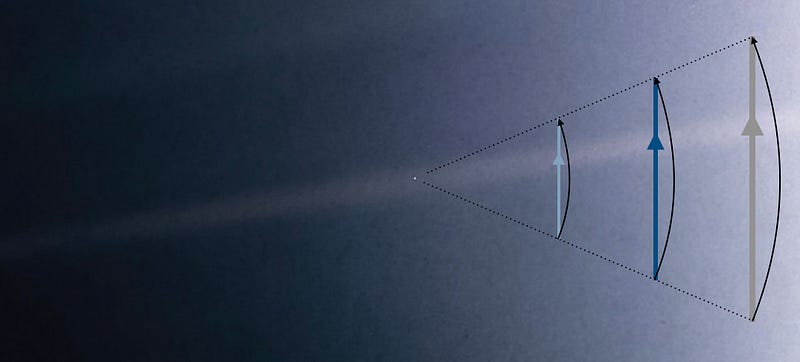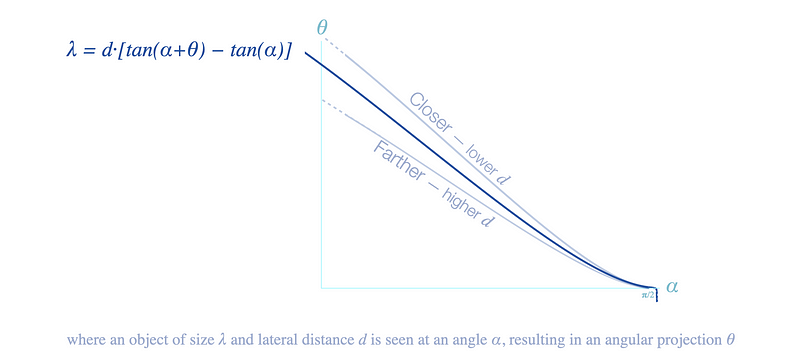Unraveling the Mysteries of Speed Perception in Nature and Tech
Written on
Understanding Speed Perception
Mysteries often lie just beneath the surface of our everyday experiences, masked by familiarity. Picture yourself driving down a straight road, tunes playing, and the landscape zipping by. While everything around you appears to rush past, what lies ahead seems almost stagnant. Intriguingly, if you zoom in on the scene, it gives the impression of moving even slower—almost like a slow-motion effect.

So, which perception of speed is accurate—the fast or the slow? The truth is, speed itself is not something we can directly observe. Instead, it’s essential to recognize that our perception of speed is influenced by our perspective.
A well-known quote echoes this idea: we cannot see speed in the conventional sense. When we attempt to gauge how fast we’re traveling, whether it's in a car or while jogging, we usually refer to linear speed—like 88 mph or 5 km/h. However, what our eyes are actually interpreting is a form of angular speed. Even when an object moves in a straight line, our perception of it is transformed into changing angles as it is viewed from our single point of observation. Our eyes, cameras, and telescopes all collect information from a solitary vantage point in the vastness of the universe.

The Illusion of Straight Lines
This everyday puzzle of varying apparent speeds has a straightforward explanation. However, the environment we navigate creates a powerful illusion. Buildings, roads, and trees give us the impression that we can perceive straight lines clearly. In reality, reconstructing the linear geometry of our surroundings is a complicated task requiring multiple viewpoints or advanced sensors, such as LiDAR.
Yet, it turns out that the unassuming fruit fly has a different approach. These tiny insects, often found buzzing around fruit, can actually compute linear speed with remarkable efficiency using their limited visual capabilities (10,000 neurons and a 30x30 pixel resolution).

Insights from the Fly Metaverse
Research into how fruit flies navigate in a simulated environment—a wind tunnel designed to mimic virtual reality—has unveiled their ability to measure linear speed and the underlying mechanics. This fascinating intersection of biology, engineering, and computer science unfolds in three key components:
Component 1: The Fundamental Assumption
Fruit flies operate under a fundamental assumption ingrained in their neural architecture: they predominantly fly in straight lines. This behavior, known as saccadic flight, means that their long stretches of flight are usually only interrupted by quick turns. This perspective allows them to perceive angular speeds, especially when moving straight ahead.

Component 2: Comprehensive Visual Capability
Flies don't need to turn their heads to observe the rapid movement of objects on either side. Their semi-spherical eyes grant them a wide field of view, enabling instant comparisons across their visual field. This structural advantage allows them to compute data continuously, without the need for shifting focus.
Component 3: Predictive Modeling
With the ability to compare visual signals from different angles, flies can anticipate future movements based on their current observations. By utilizing a simple mathematical formula, they can derive predictions about the angular speeds they will encounter, allowing them to navigate effectively.

Connecting to Historical Insights
This computation method mirrors the observations of Galileo in 1603, who noted that a sphere rolling down an incline produced sound intervals that reflected its acceleration due to gravity. By adjusting the slope without altering the bell placements, Galileo demonstrated that time between sounds could indicate linear acceleration. This principle suggests that with the right configuration, measurements can become simpler and more intuitive.

The Broader Implications
The insights gained from studying fruit flies offer significant implications for our understanding of biological computations. The ability of flies to measure their own linear speed and construct 3D maps of their surroundings demonstrates a remarkable efficiency. Their visual processing is designed to predict and interpret the environment, revealing distances to objects based on visual discrepancies.
While this overview does not encompass all the intricacies, the simplicity of the computational principles and the innovative engineering behind them inspired the founding of VISSEE. Early on, we faced skepticism from automakers regarding our vision of integrating a fisheye lens and FPGA into vehicles. Nevertheless, the lessons learned have been invaluable, leading to a profound appreciation for the hidden mysteries in everyday experiences. If we dare to explore, we may uncover some of life’s most extraordinary adventures.
Chapter 2 Title
In this video titled "What does the speed of light look like on earth?", we explore the fascinating interactions of speed, light, and perception, unraveling the mysteries of how we visualize speed.
Chapter 3 Title
The second video, "What would we see at the speed of light?", delves into the implications of traveling at light speed, showcasing the extraordinary phenomena that would accompany such an experience.